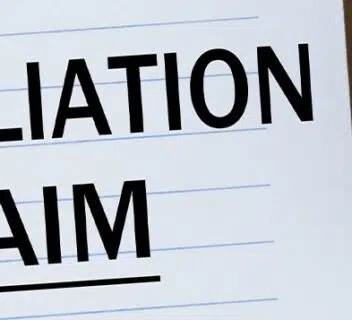Hostile working conditions involve severe and unwelcome behavior that makes it hard to work. This can include harassment, discrimination, and abuse. Knowing what these conditions are and how to deal with them is crucial. This article will help you identify hostile working conditions, understand your legal rights, and take necessary actions.
Key Takeaways
- A hostile work environment is characterized by severe or pervasive unwelcome conduct related to protected characteristics, making it vital to differentiate from merely unpleasant conditions.
- Title VII of the Civil Rights Act and the EEOC are key legal frameworks that protect employees from workplace discrimination and hostile conditions, enabling them to file complaints and seek recourse.
- Recognizing signs of hostility, documenting incidents, and taking appropriate action, including reporting to HR or legal authorities, are essential steps for employees facing hostile conditions.
Identifying Hostile Working Conditions
A hostile work environment is defined as a workplace where unwelcome conduct occurs, making it difficult for employees to perform their duties. This conduct must be severe or pervasive enough to disrupt the victim’s employment conditions and create an objectively abusive work environment. Distinguishing between a hostile work environment and a merely unpleasant one is crucial. For instance, isolated incidents or petty slights do not qualify as hostile work conditions unless they are extremely serious.
To be considered hostile, the behavior must meet the following criteria:
- It must be related to protected characteristics such as race, age, gender, or sexual orientation.
- Merely yelling at an employee for being late or teasing that is not related to these characteristics does not meet the criteria for a hostile work environment or offensive conduct.
- Courts assess hostility based on the severity and widespread nature of the behavior.
Examples of hostile work conditions can include a few examples of ongoing harassment, discrimination, or intimidation that affects job performance. Offensive remarks linked to protected traits, like race or gender, are clear indicators. Recognizing these distinctions is the first step in addressing hostile work environments.
Legal Framework for Hostile Work Environments
Title VII of the Civil Rights Act is a cornerstone in the fight against hostile work environments and employment law. It prohibits employment discrimination based on race, color, religion, sex, national origin, gender, and protected class. Under Title VII, a workplace that includes discrimination may be deemed hostile if it is filled with discriminatory behavior that disrupts the victim’s employment conditions, in accordance with hostile work environment laws.
The Equal Employment Opportunity Commission (EEOC) plays a critical role in enforcing these protections. Employees can file charges of discrimination with the EEOC, which investigates and takes action against employers that violate these laws. Additionally, the Equal Pay Act and the Employment Act allow employees to challenge discriminatory pay practices, supplementing the protections offered by Title VII.
State laws can also provide additional protections against workplace discrimination, complementing federal law like Title VII. Regularly reviewing and updating policies helps ensure they reflect current laws and best practices for workplace conduct. Such a proactive approach creates a safe and respectful work environment and supports equitable jobs.
Common Signs of a Hostile Workplace
Both employees and employers must recognize the signs of a hostile workplace environment. Fear, apprehension, and official complaints to HR about bullying or discrimination are clear indicators. Pervasive workplace harassment, discrimination, and offensive behaviors are also strong signs of a hostile work environment claim. Hostile workplaces can arise from these issues, especially when a hostile work environment exists.
Indicators of hostility include:
- Physical or verbal aggression, such as verbal attacks, spiteful comments, and outright cruelty
- Unfair policies that disproportionately affect certain groups
- Isolation and exclusion of certain employees, which often leads to a toxic atmosphere, along with various annoyances and isolated incidents.
Favoritism can create a divisive atmosphere and is another sign of a potentially hostile environment. Proactive monitoring of workplace interactions helps identify and address signs of hostility early. Workplaces marked by hostility often raise concerns about retaliation, highlighting the need for a culture where employees feel safe to report issues.
Documenting Hostile Behavior
Addressing hostile behavior effectively requires thorough documentation. Thoroughly recording incidents where individuals experience harassment, including sexual harassment, is vital for holding individuals accountable and ensuring a safe work environment. Specific instances of harassment should be documented, including dates, times, and the parties involved, especially when the person harassed is involved.
To address hostile behavior, you should:
- Keep a detailed journal of incidents.
- Gather evidence such as communications and documents.
- Note the context of each incident to provide a comprehensive view.
- Report these incidents to your manager or HR to ensure a formal record exists.
To ensure security, keep documentation at home rather than in the workplace. Detailed notes can provide crucial evidence of hostile behavior, essential for escalating issues to management or HR.
Reporting Hostile Work Conditions
Employees facing hostile work conditions should first attempt to resolve the issue directly with the person responsible, if safe to do so. If direct resolution is impossible, report the issue to the human resources department next.
Documenting inappropriate behavior incidents and reporting them to HR or a manager is essential. If mistreatment persists after reporting to HR, contact a relevant authority or the proper authorities, and consider contacting an employment lawyer. Having anonymous reporting options encourages employees to report harassment without fear.
Investigations following a report must be fair and consistent. Escalate the report to the supervisor if the person creating hostility is unresponsive, as a reasonable person would expect. An effective employee handbook outlining workplace policies and procedures for addressing harassment is crucial.
Taking Legal Action Against Hostile Work Environments
Legal action may be necessary if internal measures fail to resolve the issue. Filing a charge of discrimination with the EEOC is crucial before pursuing a lawsuit for unlawful discrimination. This can be done online, in person, or by mail, making the process accessible to employees and providing them with legal options in a legal sense.
Dual filing enables employees to file a charge with both the EEOC and a state or local Fair Employment Practices Agency simultaneously. The deadline for filing a discrimination charge varies based on relevant state laws. In California, for example, filing with the CRD automatically files one with the EEOC due to a cross-filing agreement.
An interview with an EEOC staff member can clarify the next steps for addressing discrimination concerns, though we encourage you to speak to an attorney first. Contact 1-800-THE-LAW2 for a free consultation with an employment lawyer who can provide legal guidance.
Protecting Your Mental Health in a Hostile Environment
A hostile work environment can take a significant toll on mental health. Discriminatory behaviors disrupt employees’ productivity and well-being. Losing employment due to a hostile work environment increases the risk of mental health issues and suicidal thoughts.
A hostile work environment directly causes employee burnout. Challenges in working effectively in such an environment can lead to possible mental health issues. Stress management techniques and leisure activities can help individuals cope in a toxic work environment.
Seeking support through professional counseling or support groups is crucial to maintaining mental well-being in a sufficiently severe hostile work environment.
Creating a Positive Work Culture
A positive company culture is fundamental to preventing hostile work environments. Celebrating everyone in the workplace promotes a positive work culture. Commitment to diversity, equity, and inclusion enhances employee satisfaction and demonstrates dedication to a safe workplace.
To foster a respectful workplace culture:
- Leadership must model respectful behavior, setting a standard for the entire workplace.
- Recognition programs that reward positive behavior foster a culture of respect and teamwork.
- Open communication encourages employees to express concerns safely, reducing the fear of retaliation.
Flexible work conditions and a healthy work-life balance significantly protect mental health. Training managers enhances their employees’ ability to support employees’ mental health needs in a challenging environment, ultimately improving work performance.
Summary
Recognizing and addressing hostile work environments is essential for maintaining a productive and respectful workplace. From understanding the legal framework to identifying common signs of hostility, documenting and reporting incidents, and taking legal action, every step is crucial.
Employers and employees alike must be proactive in fostering a positive work culture, ensuring that everyone can thrive. By implementing the strategies discussed, we can work towards creating safer and more inclusive work environments for all.
Frequently Asked Questions
A hostile work environment is characterized by unwelcome conduct that significantly disrupts an employee’s ability to perform their job. Such conduct must be severe or pervasive, impacting the overall working conditions.
A hostile workplace typically manifests through signs such as fear, harassment, bullying, complaints, verbal or physical aggression, and favoritism. Recognizing these indicators is crucial for fostering a healthier work environment.
Document hostile behavior by maintaining a detailed journal of incidents, collecting relevant evidence such as communications, and reporting these incidents to your manager or HR to create a formal record. This ensures your concerns are taken seriously.
To effectively report hostile work conditions, first, attempt to resolve the issue directly with the individual if it’s safe to do so. If the situation does not improve, escalate your concern to HR, and consider contacting a relevant authority or employment lawyer if necessary.
To protect your mental health in a hostile environment, engage in stress management techniques, seek professional counseling or support groups, and prioritize maintaining a healthy work-life balance. These strategies can significantly enhance your well-being amidst challenges.

